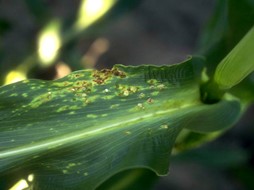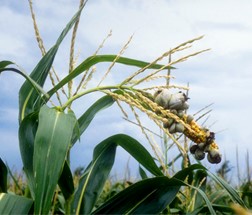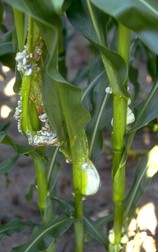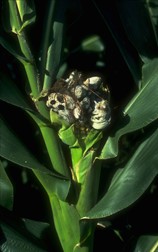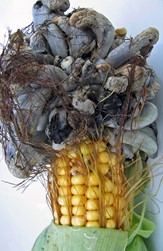Disease Cycle
Common smut spores that overwinter (teliospores) are very resistant to freezing and drying and may survive in the soil or crop debris for several years. Under good growing conditions the teliospores germinate and new spores (basidiospores) are carried by the wind or splashed by water to young, developing tissues of corn plants. These spores germinate and penetrate through wounds or silks into the plant. See diagram of common smut disease cycle (page 3).
The invading fungus stimulates an increase in the number and size of affected plant cells, forming a gall. The smut mycelium grows between plant cells until just before the new teliospores are formed. The enlarged cells are then invaded, causing them to collapse and die.
The fungus feeds on the cell contents in order to develop and produce masses of mature spores. If the process starts early in the growing season, the first mass of spores produced is capable of re-infecting the same plant or neighboring plants. Galls continue to form, and the spores are scattered around almost continuously through the growing period.
Silage acids kill spores in silage, but spores that survive passing through the animal digestive tract do not pose a health threat to livestock. In some areas of Mexico, the young smut galls are considered a delicacy for human consumption. Mycotoxins that may be harmful to livestock are not produced by those fungi that cause smuts or common foliar and rust diseases. Ear molds can result in potential mycotoxin problems. Predisposing fungal diseases and other plant stressors can jeopardize corn plant health and may provide conditions that make ear molds and their corresponding mycotoxins more likely to develop.
Management of Common Smut
Corn growers worldwide, particularly in dry or cold growing areas have experienced presence of common smut in their fields. Yield losses caused by common smut are seldom above 5%. The impact of this fungus can be limited by practicing the following disease control approaches.
Maintain well-balanced soil fertility, possibly based on soil tests. Excessive nitrogen available in soil, accompanied sometimes by low phosphorus level, increases the chance for smut infestation. Very dry weather conditions tend to aggravate this further.
Avoid mechanical injuries to plants. Implements could cause small cuts and wounds to the leaves, stalks or roots, which then provide entry points for the fungus.
Protect plants against insects. This is achievable in early stages of crop development through use of an insecticide seed treatment. In later stages, controlling European corn borer and other insects feeding on the plant is be beneficial for preventing smut infestation.
Choose well-adapted hybrids for a particular growing environment. When excessive stress is imposed on corn (drought, fertility stress, excessive plant density, or corn maturity mismatch) weakened plants are susceptible to smut infection. Short husks and exposed ears may prolong the pressure of fungus spores landing on vulnerable silks.
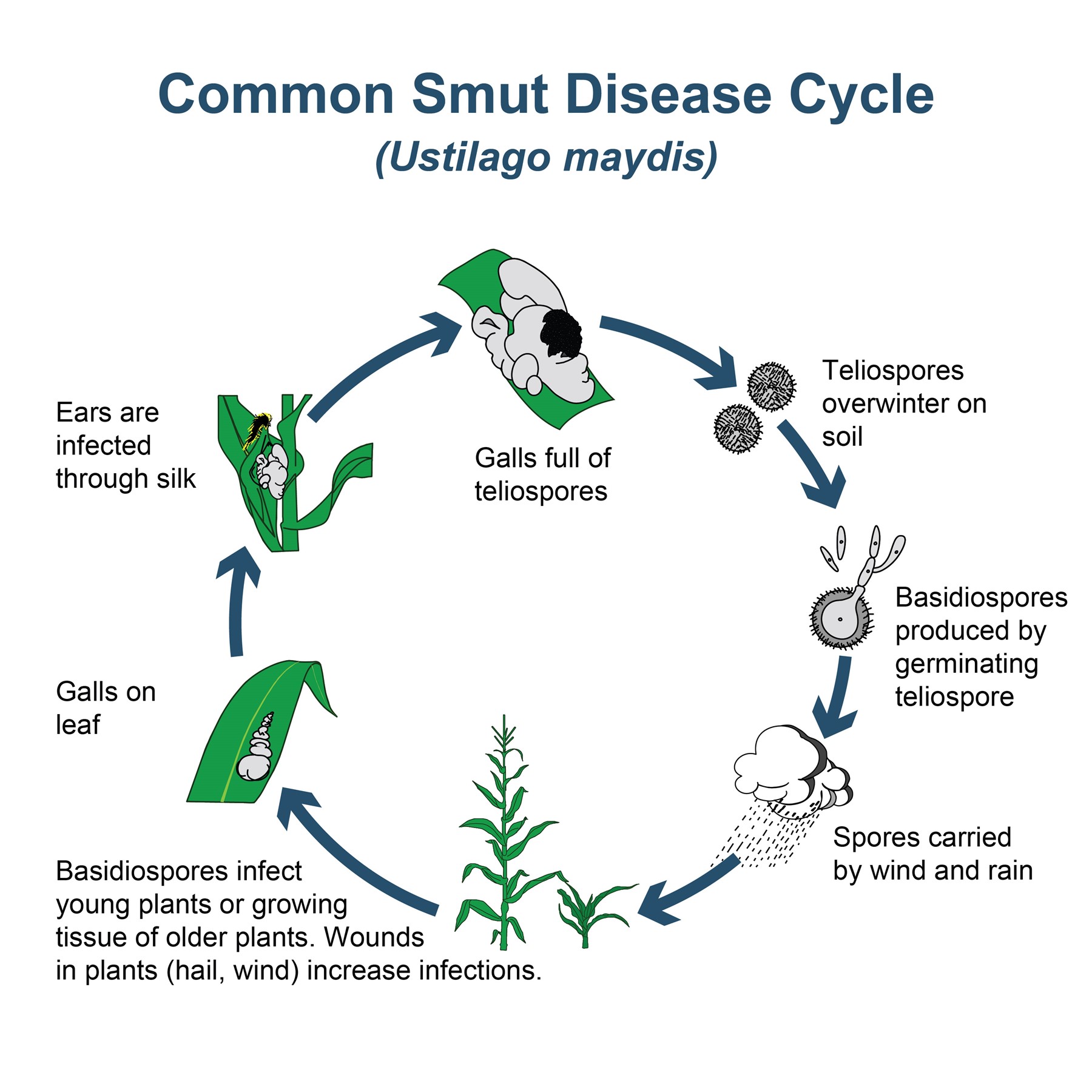
Sources
Miller, S.A., P.E. Lipps, and R.C. Rowe. 1996. Common Smut of Corn. The Ohio State University Extension Fact Sheet HYG-3119-96, The Ohio State University, Columbus, OH
White, D.G.(ed.) 1999. Compendium of Corn Diseases. 3rd ed. APS Press, St. Paul, MN
Acknowledgements
Images for Figures 1 and 5 are from Harold Kaufman, TAEX, and used with permission. Image for Figure 2 is from Patrick Lipps, The Ohio State University, used with permission.
The foregoing is provided for informational use only. Please contact your Pioneer sales professional for information and suggestions specific to your operation. Product performance is variable and depends on many factors such as moisture and heat stress, soil type, management practices and environmental stress as well as disease and pest pressures. Individual results may vary. FF160411 (200728)
April 2016
VOL. 16 · NO. 5






